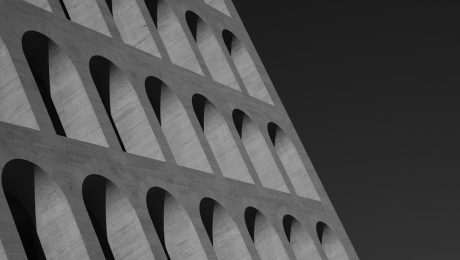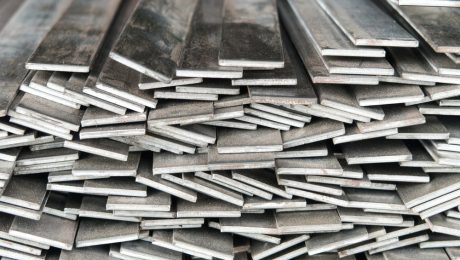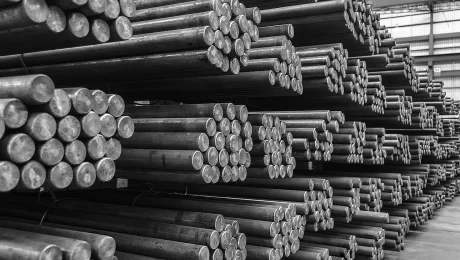The Role of Steel in Earthquake-Resistant Structures
Introduction
Earthquakes are devastating natural disasters that can cause widespread destruction and loss of life. Designing structures that can withstand the immense forces exerted during seismic events is paramount. Steel, with its unique properties, plays a critical role in creating earthquake-resistant structures, ensuring the safety and resilience of buildings and infrastructure in seismically active regions.
Why Steel is Ideal for Earthquake-Resistant Design
Several inherent characteristics of steel make it an exceptional material for earthquake-resistant construction:
- High Strength-to-Weight Ratio: Steel possesses a remarkably high strength-to-weight ratio, meaning it can withstand significant loads while remaining relatively lightweight. This is crucial in seismic design, as lighter structures experience less inertial force during an earthquake.
- Ductility: Steel exhibits excellent ductility, meaning it can deform significantly under stress before fracturing. This allows steel structures to absorb seismic energy through plastic deformation, preventing catastrophic collapse. The structure can bend and sway, dissipating the earthquake’s energy rather than resisting it rigidly.
- Resilience: Steel’s ability to return to its original shape after deformation makes it highly resilient. This means that after an earthquake, a steel structure is more likely to be repairable rather than requiring complete demolition.
- Weldability: Steel’s excellent weldability allows for the creation of complex and interconnected structural systems, optimizing load distribution and energy dissipation during seismic activity.
- Fatigue Resistance: Steel demonstrates good fatigue resistance, meaning it can withstand repeated stress cycles without failure. This is important considering the cyclical nature of ground shaking during an earthquake.
- Recyclability: Steel is a highly recyclable material, contributing to sustainable construction practices and reducing the environmental impact of building and rebuilding after seismic events.
Applications of Steel in Earthquake-Resistant Structures
Steel is employed in various ways to enhance the seismic performance of buildings and infrastructure:
- Steel Frames: Steel moment frames, braced frames, and shear walls form the primary structural system, providing strength and stability against lateral forces. These frames are designed to deform plastically, absorbing energy and preventing collapse.
- Steel Bracing: Diagonal bracing systems, often composed of steel members, are highly effective in resisting lateral loads. These braces provide additional stiffness and strength to the structure, limiting excessive deformation.
- Steel Dampers: Steel dampers are energy dissipation devices that are incorporated into steel structures to reduce the amplitude of vibrations during an earthquake. These dampers absorb seismic energy, minimizing damage to the structure.
- Steel Base Isolation: Base isolation systems use steel bearings and dampers to decouple the structure from the ground, reducing the transmission of seismic forces to the building. This significantly minimizes the impact of ground shaking.
- Steel Connections: The design and detailing of steel connections are crucial for ensuring the overall seismic performance of the structure. Properly designed connections can enhance the ductility and energy dissipation capacity of the frame.
- Steel Shear Walls: Steel shear walls, often constructed using steel plates or sections, provide significant lateral stiffness and strength, improving the overall seismic resistance of the structure.
Seismic Design Considerations for Steel Structures
Designing earthquake-resistant steel structures requires careful consideration of several factors:
- Seismic Zone: The seismic design must account for the specific seismic hazard in the region where the structure is located. Building codes and standards provide guidelines for seismic design based on the seismic zone.
- Soil Conditions: The type of soil on which the structure is founded significantly influences the seismic response. Soil amplification can increase the ground motion, requiring modifications to the structural design.
- Structural Analysis: Sophisticated computer-aided structural analysis techniques are employed to evaluate the seismic performance of the steel structure under various loading scenarios. Nonlinear analysis is often used to capture the inelastic behavior of steel during an earthquake.
- Detailing and Fabrication: Proper detailing and fabrication of steel members and connections are essential to ensure the intended seismic performance. Welding quality and bolt tightening are critical aspects.
- Material Properties: The mechanical properties of steel, such as yield strength and ductility, are crucial input parameters in seismic design. Material testing is conducted to verify the properties of the steel used in the construction.
- Code Compliance: The design must comply with relevant building codes and standards for seismic design, ensuring the safety and resilience of the structure.
Conclusion
Steel’s unique combination of high strength, ductility, and weldability makes it an indispensable material in the construction of earthquake-resistant structures. By employing advanced design techniques and incorporating steel components strategically, engineers can create buildings and infrastructure that can withstand the destructive forces of earthquakes, safeguarding lives and minimizing damage. The continued development and refinement of steel-based seismic design strategies will remain crucial in mitigating the risks associated with seismic activity globally.
Further Reading
For those interested in learning more, here are some resources to explore:
- American Institute of Steel Construction (AISC)
- Structural Engineering Institute (SEI)
- International Code Council (ICC)
“`
Use of Steel in Agricultural Buildings: A Comprehensive Guide
Introduction
The agricultural sector is constantly evolving, demanding structures that are durable, efficient, and adaptable to changing needs. Steel has emerged as a leading material in agricultural building construction, offering a compelling combination of strength, versatility, and cost-effectiveness. This comprehensive guide explores the various applications of steel in agricultural buildings, examining its benefits, different types, design considerations, and future trends.
Benefits of Using Steel in Agricultural Buildings
Steel’s popularity in agricultural construction stems from numerous advantages:
- High Strength-to-Weight Ratio: Steel boasts exceptional strength relative to its weight, allowing for the construction of larger spans with minimal support structures. This translates to more usable space within the building.
- Durability and Longevity: Steel structures are highly resistant to rot, insect infestation, and fire, significantly extending their lifespan compared to traditional materials like wood. Properly treated steel can withstand harsh weather conditions for decades.
- Fast and Efficient Construction: Pre-fabricated steel components can be easily assembled on-site, accelerating the construction process and reducing labor costs. This is particularly advantageous for large-scale projects.
- Cost-Effectiveness: While initial material costs might be higher than some alternatives, the long-term savings from reduced maintenance, extended lifespan, and faster construction often make steel a more economical choice.
- Design Flexibility: Steel’s malleability allows for a wide range of design possibilities, accommodating various architectural styles and functional requirements. Curved roofs, large open spaces, and customized layouts are all achievable with steel.
- Sustainability: Steel is a highly recyclable material, contributing to environmentally friendly construction practices. Furthermore, the durability of steel structures reduces the need for frequent replacements, minimizing waste.
- Easy Expansion and Modification: Steel structures can be easily expanded or modified to accommodate future needs, offering flexibility for growing agricultural operations.
Types of Steel Used in Agricultural Buildings
Several types of steel are suitable for agricultural building construction, each offering specific properties:
- Hot-Rolled Steel: This is a common and cost-effective choice, offering good strength and durability. It’s often used for structural components like beams and columns.
- Cold-Formed Steel: This type of steel is formed at room temperature, allowing for intricate shapes and designs. It’s often used for cladding, roofing, and other non-structural elements.
- Galvanized Steel: A protective zinc coating enhances corrosion resistance, making it ideal for outdoor applications and extending the lifespan of the structure.
- Stainless Steel: Offers superior corrosion resistance and is particularly suitable for environments with high humidity or exposure to corrosive chemicals.
Design Considerations for Steel Agricultural Buildings
Designing a steel agricultural building requires careful consideration of several factors:
- Structural Engineering: Accurate load calculations are crucial to ensure the building’s stability and safety. This involves considering snow loads, wind loads, and the weight of stored materials.
- Climate Conditions: The building’s design must account for local climate conditions, including temperature extremes, precipitation, and wind speeds. Proper insulation and weatherproofing are essential.
- Intended Use: The specific purpose of the building (e.g., livestock housing, storage, greenhouse) will dictate its design features, including size, ventilation, and interior layout.
- Building Codes and Regulations: Adherence to local building codes and regulations is paramount to ensure the safety and legality of the structure.
- Foundation Design: A suitable foundation is crucial for supporting the steel structure and preventing settling or damage. The type of foundation will depend on the soil conditions and building size.
- Fire Protection: While steel is inherently fire-resistant, additional fire protection measures may be necessary depending on the building’s use and local regulations.
Future Trends in Steel Agricultural Buildings
The use of steel in agricultural buildings is constantly evolving, with several emerging trends shaping the future:
- Sustainable Steel Production: The industry is focusing on reducing the carbon footprint of steel production through innovative methods and renewable energy sources.
- Smart Building Technologies: Integration of smart sensors and automation systems to monitor environmental conditions, optimize energy consumption, and improve efficiency.
- Prefabricated and Modular Designs: Further advancements in prefabrication and modular construction are expected to accelerate construction times and reduce costs.
- Advanced Materials and Coatings: Development of new steel alloys and protective coatings to enhance durability, corrosion resistance, and longevity.
- Increased Use of High-Strength Steel: High-strength steel allows for lighter and more efficient structures, further reducing material costs and environmental impact.
Conclusion
Steel’s versatility, strength, and cost-effectiveness make it a compelling choice for modern agricultural buildings. By carefully considering design factors, selecting appropriate steel types, and staying abreast of industry trends, farmers and agricultural businesses can leverage the benefits of steel to create durable, efficient, and sustainable structures that support their operations for years to come.
“`
The Role of Steel in Earthquake-Resistant Structures
Earthquakes are devastating natural disasters that can cause widespread destruction and loss of life. Designing structures that can withstand these powerful forces is crucial for ensuring public safety. Steel, with its unique properties, plays a vital role in the construction of earthquake-resistant structures, significantly enhancing their resilience and ability to survive seismic events.
The Superior Properties of Steel in Seismic Design
Steel’s effectiveness in earthquake-resistant design stems from several key properties:
- High Tensile Strength: Steel possesses exceptional tensile strength, meaning it can withstand significant pulling forces without breaking. This is crucial during an earthquake, as the ground shaking can induce substantial tension in structural elements.
- Ductility: Steel’s ductility allows it to deform significantly under stress before fracturing. This deformation absorbs seismic energy, preventing catastrophic failure. The structure can bend and sway, dissipating the earthquake’s force rather than collapsing.
- Weldability: Steel’s ease of welding allows for the creation of complex and intricate structural systems, optimizing the distribution of forces during an earthquake. This flexibility in design is invaluable in achieving optimal seismic performance.
- Recyclability: Steel is a highly recyclable material, contributing to sustainable construction practices and reducing the environmental impact of building earthquake-resistant structures.
- Fatigue Resistance: Steel exhibits good fatigue resistance, meaning it can withstand repeated stress cycles without significant degradation. This is important as earthquakes often involve numerous cycles of shaking.
Applications of Steel in Earthquake-Resistant Structures
Steel is used in various ways to enhance the seismic performance of buildings and other structures:
1. Steel Frames:
Steel frames form the primary load-bearing structure in many earthquake-resistant buildings. These frames, composed of columns and beams, are designed to withstand lateral forces generated by ground shaking. The use of moment-resisting connections, which allow for controlled rotation and energy dissipation, is critical in steel frame design for seismic resilience.
2. Steel Bracing:
Steel bracing systems, such as diagonal bracing or chevron bracing, are incorporated into steel frames to provide additional lateral stiffness and strength. These bracing members resist lateral forces and help to prevent excessive deformation during an earthquake.
3. Steel Shear Walls:
Steel shear walls, constructed from steel plates or sections, act as stiff vertical elements that resist lateral forces. They are particularly effective in resisting shear forces, which are prevalent during earthquakes.
4. Base Isolation:
Base isolation systems, which use steel bearings and dampers, decouple the structure from the ground motion, reducing the amount of seismic energy transmitted to the building. This technology significantly reduces the forces acting on the structure during an earthquake.
5. Steel Dampers:
Steel dampers are energy dissipation devices that absorb seismic energy, reducing the building’s response to ground shaking. Various types of steel dampers, such as viscous dampers and yielding dampers, are used to enhance seismic performance.
Design Considerations for Earthquake-Resistant Steel Structures
Designing earthquake-resistant steel structures requires careful consideration of several factors:
- Seismic Zoning: The design must account for the seismic hazard in the specific location, considering the potential ground motion intensity and frequency content.
- Soil Conditions: Soil properties significantly influence the ground motion characteristics and the building’s response. The design must consider the soil type and its potential for liquefaction.
- Building Codes and Standards: Adherence to relevant building codes and standards, such as those developed by organizations like the American Society of Civil Engineers (ASCE) and the International Code Council (ICC), is essential.
- Structural Analysis and Design: Sophisticated structural analysis techniques, including nonlinear dynamic analysis, are employed to evaluate the building’s response to earthquake ground motions.
- Detailing and Construction: Proper detailing and construction are crucial to ensure the integrity and performance of the steel connections and elements.
Conclusion
Steel’s inherent properties, combined with advanced design techniques and construction practices, make it an indispensable material in the construction of earthquake-resistant structures. Its ability to withstand significant forces, deform without fracturing, and absorb seismic energy makes it a key component in safeguarding lives and property during seismic events. As seismic engineering continues to advance, steel will undoubtedly remain a crucial material in building safer and more resilient communities in earthquake-prone regions.
Further Research
For more in-depth information on this topic, you can explore resources from organizations like the American Institute of Steel Construction (AISC), the Structural Engineers Association of California (SEAOC), and various academic institutions specializing in earthquake engineering.
“`
Use of Steel Structures in International Projects
Introduction
Steel, a versatile and robust material, plays a pivotal role in numerous international construction projects. Its strength, durability, and relative ease of fabrication have made it a preferred choice for a wide range of applications, from towering skyscrapers and expansive bridges to intricate offshore platforms and complex industrial facilities. This blog post delves into the significant use of steel structures in international projects, exploring its advantages, challenges, and future trends.
Advantages of Using Steel in International Projects
The widespread adoption of steel in global projects stems from several compelling advantages:
- High Strength-to-Weight Ratio: Steel’s exceptional strength allows for the creation of lighter structures compared to other materials like concrete, leading to reduced foundation costs and faster construction times. This is particularly beneficial in seismic-prone regions.
- Durability and Longevity: With proper design and maintenance, steel structures can withstand harsh environmental conditions and last for decades, minimizing lifecycle costs.
- Flexibility and Design Versatility: Steel’s malleability enables architects and engineers to create innovative and aesthetically pleasing designs, catering to diverse project requirements.
- Faster Construction Time: Pre-fabricated steel components can be manufactured off-site and assembled quickly on-site, significantly accelerating project completion.
- Cost-Effectiveness: While initial material costs might seem higher, the overall lifecycle cost of steel structures often proves more economical due to faster construction, reduced maintenance, and extended lifespan.
- Sustainability: Steel is a highly recyclable material, contributing to environmentally friendly construction practices. Modern steel production methods are also becoming increasingly efficient and sustainable.
- Easy Transportation and Handling: Steel components are relatively easy to transport and handle, simplifying logistics and reducing on-site congestion.
Applications of Steel Structures in International Projects
The versatility of steel makes it suitable for a vast array of international projects:
- High-Rise Buildings: Steel frames provide the necessary strength and stability for skyscrapers, allowing for taller and more complex designs.
- Bridges: Steel is a cornerstone of bridge construction, enabling the creation of long-span bridges that cross significant distances.
- Offshore Structures: Steel’s resistance to corrosion and its high strength are crucial for building offshore oil rigs, wind turbines, and other marine structures.
- Industrial Facilities: Steel is used extensively in the construction of factories, warehouses, and other industrial buildings, providing robust and durable structures.
- Stadiums and Arenas: Large-span steel roofs and supporting structures are commonly used in sports venues to provide ample space and accommodate large crowds.
- Transportation Infrastructure: Steel plays a vital role in railway tracks, train stations, and airport terminals.
Challenges in Using Steel Structures in International Projects
Despite its numerous advantages, using steel in international projects presents certain challenges:
- Corrosion: Steel’s susceptibility to corrosion requires careful consideration of protective coatings and maintenance strategies, particularly in harsh climates.
- Transportation and Logistics: Transporting large steel components across international borders can be complex and expensive, requiring meticulous planning and coordination.
- Skilled Labor: Constructing steel structures requires skilled welders, fabricators, and erectors, which can be a challenge in some regions.
- Quality Control: Ensuring consistent quality across the supply chain, from steel production to on-site fabrication, is essential for project success.
- Regulatory Compliance: International projects often require adherence to multiple building codes and regulations, adding complexity to the design and construction process.
- Cost Fluctuations: The price of steel can fluctuate significantly, impacting project budgets and requiring careful financial planning.
Global Best Practices for Steel Construction in International Projects
Successful steel construction in international projects relies on adhering to global best practices:
- Detailed Planning and Design: Thorough planning, including site surveys, geotechnical investigations, and detailed structural analysis, is crucial.
- Quality Assurance and Control: Implementing rigorous quality control measures throughout the entire process, from material sourcing to final assembly.
- Collaboration and Communication: Effective communication and collaboration among all stakeholders, including designers, engineers, contractors, and suppliers.
- Sustainable Practices: Incorporating sustainable design principles, such as using recycled steel and minimizing waste.
- Risk Management: Identifying and mitigating potential risks, such as weather delays, material shortages, and labor issues.
- Local Expertise: Engaging local expertise to navigate local regulations, understand site-specific conditions, and leverage local resources.
Future Trends in Steel Structures for International Projects
The future of steel construction in international projects is marked by several exciting trends:
- Advanced Steel Alloys: The development and use of high-strength, low-alloy steels that offer enhanced durability and corrosion resistance.
- Prefabrication and Modular Construction: Increased reliance on prefabricated steel components and modular construction techniques to accelerate project completion and reduce on-site construction time.
- Digital Technologies: Integration of Building Information Modeling (BIM) and other digital technologies to optimize design, fabrication, and construction processes.
- Sustainable Steel Production: Continued efforts to reduce the carbon footprint of steel production through the use of renewable energy and innovative manufacturing techniques.
- Smart Structures: Incorporation of sensors and other smart technologies to monitor structural health and performance, enabling proactive maintenance and extending the lifespan of steel structures.
Conclusion
Steel structures continue to play a dominant role in international projects, offering a combination of strength, durability, versatility, and cost-effectiveness. By addressing the challenges and embracing best practices, the construction industry can leverage the full potential of steel to create innovative, sustainable, and resilient infrastructure that meets the needs of a growing global population.
“`
Steel Equal Angle Bars: A Strong and Versatile Structural Material
Steel equal angle bars are a type of steel bar that is shaped like an L. They are typically made from carbon steel, but they can also be made from stainless steel or other types of alloy steel. Equal angle bars are available in a variety of sizes, shapes, and finishes.
Uses of steel equal angle bars
Steel equal angle bars are used in a wide variety of applications. They are often used in construction, manufacturing, and agriculture. Some of the specific uses of steel equal angle bars include:
Construction: Steel equal angle bars are used to make a variety of structural components, such as beams, columns, and braces. They are also used to make fasteners, such as nails, bolts, and screws.
Manufacturing: Steel equal angle bars are used to make a variety of machine parts, such as gears, shafts, and brackets. They are also used to make tools and equipment, such as wrenches, rakes, and shovels.
Agriculture: Steel equal angle bars are used to make a variety of agricultural implements, such as plows, harrows, and cultivators. They are also used to make fencing and other structures for livestock.
Benefits of steel equal angle bars
Steel equal angle bars offer a number of benefits, including:
Strength: Steel is a strong and durable material. Steel equal angle bars can withstand a lot of stress and strain.
Durability: Steel is also a durable material. It can withstand the elements and wear and tear.
Versatility: Steel equal angle bars are available in a variety of sizes, shapes, and finishes. This makes them versatile and adaptable to a wide range of applications.
Affordability: Steel is a relatively affordable material. This makes steel equal angle bars a cost-effective option for many applications.
Types of steel equal angle bars
There are two main types of steel equal angle bars: hot-rolled and cold-rolled. Hot-rolled steel equal angle bars are produced by rolling molten steel. Cold-rolled steel equal angle bars are produced by rolling solid steel.
Hot-rolled steel equal angle bars are typically less expensive than cold-rolled steel equal angle bars. However, they are also less precise and have a rougher surface finish. Cold-rolled steel equal angle bars are more precise and have a smoother surface finish. However, they are also more expensive.
Conclusion
Steel equal angle bars are a versatile and affordable material that can be used in a wide variety of applications. They are strong, durable, and adaptable. Steel equal angle bars offer a number of benefits that make them a good choice for many projects.
What is a Steel Flat Bar?
A steel flat bar is a flat, rectangular piece of steel, commonly crafted from carbon steel but also available in stainless steel or other alloy variants. These bars come in various sizes, shapes, and finishes.
Uses of Steel Flat Bars
Steel flat bars find extensive application across diverse sectors including:
Construction: Essential for structural components like beams, columns, and braces, as well as for fasteners such as nails, bolts, and screws.
Manufacturing: Utilized in crafting machine parts like gears, shafts, and brackets, as well as tools and equipment such as wrenches, rakes, and shovels.
Agriculture: Integral in manufacturing agricultural implements like plows, harrows, and cultivators, as well as fencing and livestock structures.
Benefits of Steel Flat Bars
Steel flat bars offer several advantages:
Strength: Withstand high stress and strain due to the inherent strength of steel.
Durability: Resilient against environmental factors and wear, ensuring longevity.
Versatility: Available in various sizes, shapes, and finishes, making them adaptable to diverse applications.
Affordability: Relatively economical compared to other materials, enhancing cost-effectiveness.
Types of Steel Flat Bars
Mainly categorized into hot-rolled and cold-rolled variants:
Hot-rolled: Produced by rolling molten steel, providing cost-effectiveness but with a rougher surface finish.
Cold-rolled: Crafted by rolling solid steel, offering precision and a smoother surface finish albeit at a higher cost.
Conclusion
Steel flat bars stand out as versatile and cost-effective materials suitable for a wide array of applications. Their robustness, durability, and adaptability make them indispensable for numerous projects.
Steel Round Bars: A Versatile and Durable Material
Steel round bars are a type of steel bar that is shaped like a cylinder. They are typically made from carbon steel, but they can also be made from stainless steel or other types of alloy steel. Steel round bars are available in a variety of sizes, shapes, and finishes.
Uses of steel round bars
Steel round bars are used in a wide variety of applications. They are often used in construction, manufacturing, and agriculture. Some of the specific uses of steel round bars include:
Construction: Steel round bars are used to make a variety of structural components, such as beams, columns, and braces. They are also used to make fasteners, such as nails, bolts, and screws.
Manufacturing: Steel round bars are used to make a variety of machine parts, such as gears, shafts, and brackets. They are also used to make tools and equipment, such as wrenches, rakes, and shovels.
Agriculture: Steel round bars are used to make a variety of agricultural implements, such as plows, harrows, and cultivators. They are also used to make fencing and other structures for livestock.
Benefits of steel round bars
Steel round bars offer a number of benefits, including:
Strength: Steel is a strong and durable material. Steel round bars can withstand a lot of stress and strain.
Durability: Steel is also a durable material. It can withstand the elements and wear and tear.
Versatility: Steel round bars are available in a variety of sizes, shapes, and finishes. This makes them versatile and adaptable to a wide range of applications.
Affordability: Steel is a relatively affordable material. This makes steel round bars a cost-effective option for many applications.
Types of steel round bars
There are two main types of steel round bars: hot-rolled and cold-rolled. Hot-rolled steel round bars are produced by rolling molten steel. Cold-rolled steel round bars are produced by rolling solid steel.
Hot-rolled steel round bars are typically less expensive than cold-rolled steel round bars. However, they are also less precise and have a rougher surface finish. Cold-rolled steel round bars are more precise and have a smoother surface finish. However, they are also more expensive.
Conclusion
Steel round bars are a versatile and affordable material that can be used in a wide variety of applications. They are strong, durable, and adaptable. Steel round bars offer a number of benefits that make them a good choice for many projects.







